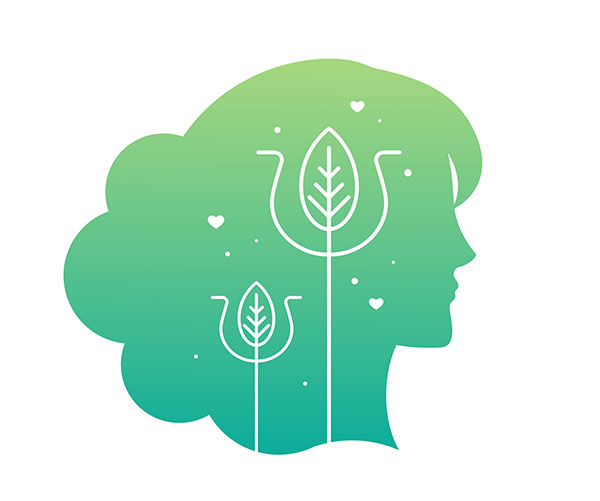Think you’re well versed on the top women’s health dangers? Some of the facts may surprise you. Test your knowledge about the diseases that pose the biggest threat to females by answering the questions below, then keep scrolling to see the answers (no peeking!).
1. When we think about a cancer that affects women, breast cancer will come to mind for most of us, and for good reason: About one in eight U.S. women (roughly 13 percent) will develop invasive breast cancer during their lifetime, according to breastcancer.org. However, another type of cancer is diagnosed in 2 million people per year. What type of cancer is this — the most common type among men and women nationwide?
2. This is the biggest health danger to both men and women, but the condition often affects women differently. Their symptoms may include indigestion, shortness of breath and back pain rather than chest pain and other classic signs men typically experience.
3. The incidence of this condition has tripled globally since 1975, according to the World Health Organization, and it affects over 13 percent of adults 18 and over. Some of the health problems it can cause include breathing problems, several types of cancer, high blood pressure and many other issues. A blood glucose disease commonly associated with this condition also is on the rise.
4. All of us feel down at times, but for those with this mental health ailment, every day can be a struggle. Certain biological, hormonal and social factors make women more susceptible to this condition. In fact, a reported one in eight women experience it in their lifetime, which is twice the rate of men. Although this is a mood disorder, it can manifest physically, causing symptoms like aches, pains, headaches, cramps or digestive problems.
5. This degenerative bone condition is most common in older women, affecting one in four females aged 65 and older. It’s often called a “silent disease” because symptoms may not manifest before a fracture occurs. Breaks are most common in the hips, wrists and spine, and those with fractures in the vertebrae may show signs such as back pain, hunched posture, sloping shoulders or a curve in the back.
6. According to the National Institutes of Health, more than 80 different types of conditions fall into this category, affecting about 30 million women in the U.S. What they have in common is that they attack healthy cells and can affect almost any type of tissue, structure, function or system of the body.
Answers to our women’s health quiz
1. Skin cancer – Women 49 or younger have a higher probability of developing melanoma, the most serious type of skin cancer, than any other cancer, except breast or thyroid cancer, according to John’s Hopkins Medicine. Especially for those of us living in sunny, hot climates like South Mississippi, it’s important to protect yourself while outdoors by wearing a broad-spectrum sunscreen (SPF 30 or higher) and scheduling an annual checkup with a dermatologist.
2. Heart disease — Cardiovascular disease causes one in three deaths each year and is the number-one killer of women. Life events unique to females, including pregnancy and menopause, can impact their risk. Although this condition kills more women than all forms of cancer combined, according to the American Heart Association, only 44 percent of women recognize cardiovascular disease as their greatest health threat. The good news? Cardiac and stroke events are largely preventable through education and lifestyle changes, such as moving more, eating better and managing blood pressure.
3. Obesity and diabetes — A reported one-third of U.S. adults are obese, which is a major risk factor for type 2 diabetes. Of the nearly 26 million Americans affected by obesity, women account for almost half the cases. Excess weight makes someone twice as likely to develop diabetes, and the combined threats of diabetes and obesity put someone at greater risk for deadly conditions like heart and kidney disease and stroke. Changes in diet and increased physical activity can help manage your risk.
4. Depression — Although the causes of depression still are being studied, research suggests that it is caused by a combination of genetic, biological, environmental and psychological factors, according to the National Institute of Mental Health. Additionally, certain types of depression can occur at different stages of a woman’s life, including pregnancy, the postpartum period and perimenopause. It’s important to remember that those suffering with depression can’t just “snap out of it.” Those struggling with this mood disorder need support and compassion from loved ones. Medication, psychotherapy or a combination of the two can be effective forms of treatment.
5. Osteoporosis — This condition causes bones to be weak and break easily, and age is a major risk factor. Estrogen plays an important role in building and maintaining bones, and estrogen levels drop due to menopause. In fact, some women lose up to 25 percent of their bone mass in the first 10 years after menopause, according to the Office on Women’s Health. Prevention starts when women are younger, so make sure to get enough calcium and Vitamin D each day and engage in weight-bearing physical activity that strengthens your bones. Doctors typically treat osteoporosis with medication that prevents further bone loss or builds new bone mass.
6. Autoimmune diseases — For those with these conditions, the immune system mistakenly attacks normal cells because it can’t distinguish them from foreign invaders. Some autoimmune diseases run in families, like lupus and multiple sclerosis. Some other types include rheumatoid arthritis, inflammatory bowel disease, Addison’s disease and Guillain-Barré syndrome. Although these conditions generally aren’t preventable, they can be managed with a variety of medications depending on the disease, its severity and the symptoms.
How did you do? These are only a handful of the numerous conditions that can pose a threat to women’s health. Proper, regular screening is important (for example, make sure to get a mammogram every year starting at age 40), as are developing healthy lifestyle habits and developing relationships with medical professionals you can trust.




